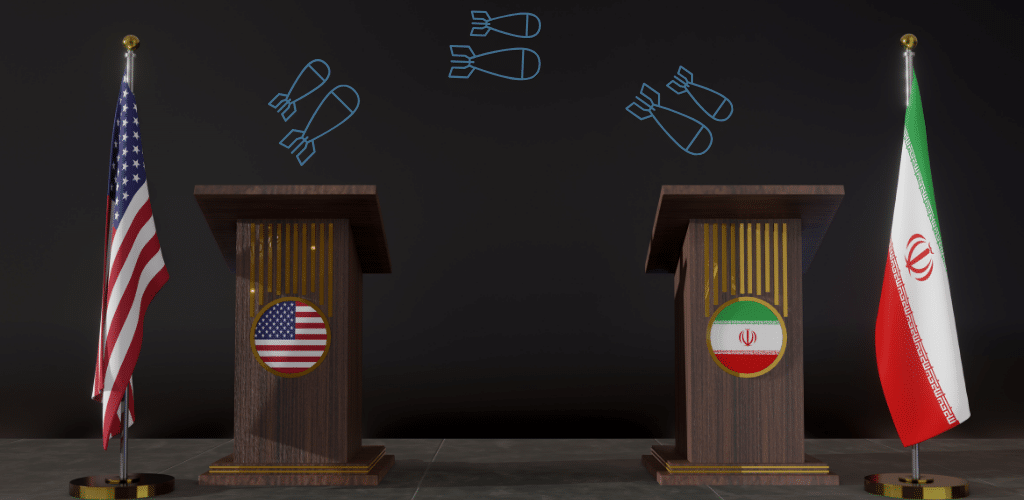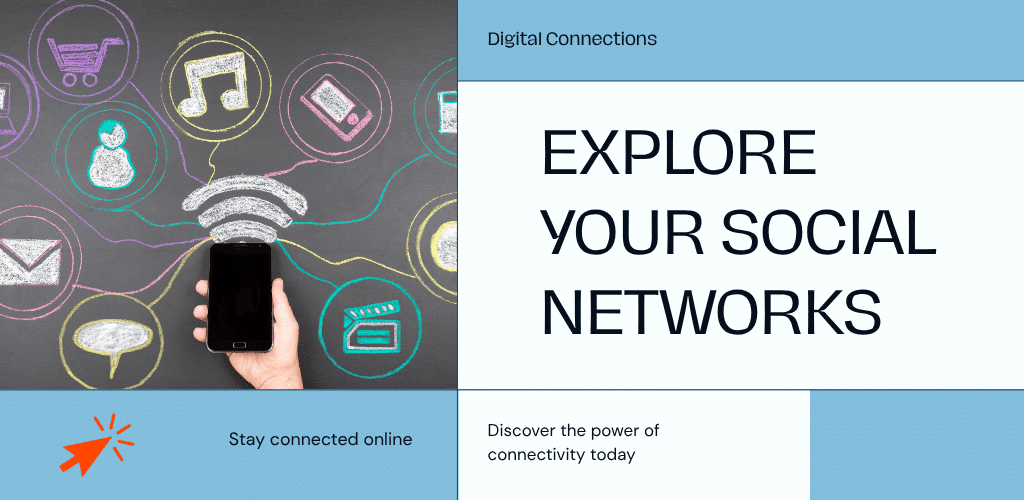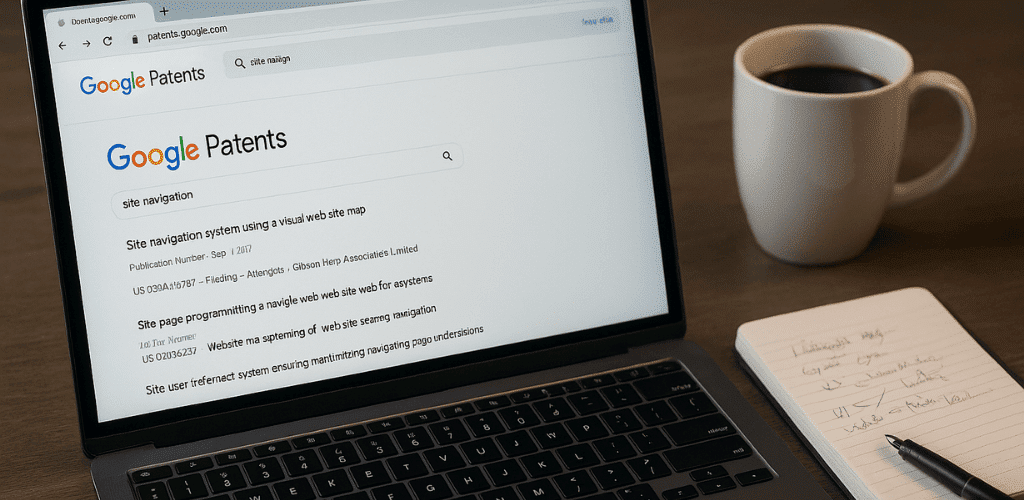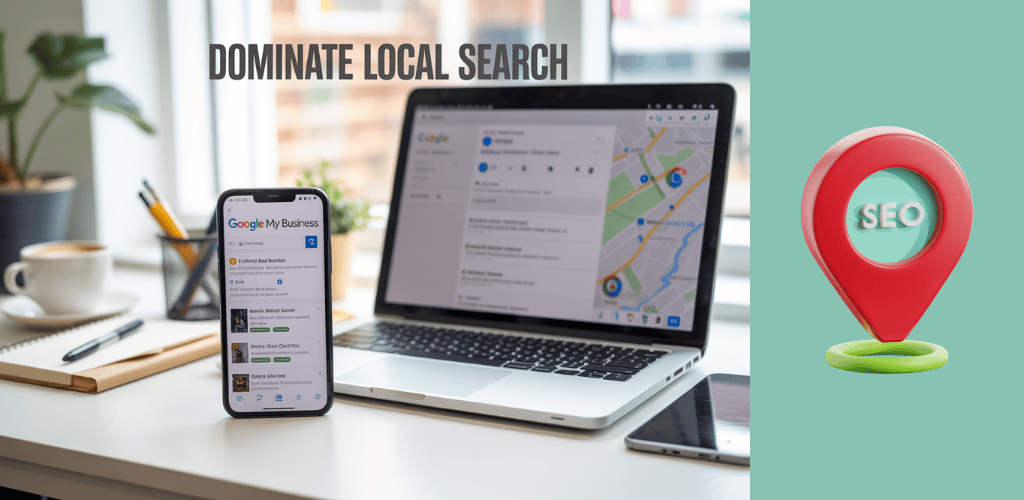Ever check your phone and see “US BOMBS IRAN” glaring back at you? Your heart rate jumps, and suddenly that sponsored post for summer sandals feels wildly inappropriate next to World War III headlines.
For digital marketers, these moments are the new frontline of brand safety. Your carefully crafted campaign can transform from clever to catastrophic in the time it takes for breaking news to drop.
Brand safety adjacent to news content has become the high-wire act nobody prepared you for. According to last month’s Integral Ad Science report, 78% of consumers view brands more negatively when their ads appear alongside distressing news.
The real question isn’t whether your digital ad strategy needs to adapt to crisis news cycles — it’s how quickly you can pivot when the next headline hits. And trust me, your competitors aren’t waiting for the dust to settle.
Table of Contents
Understanding the Impact of Geopolitical News on Digital Advertising

How breaking news about US-Iran tensions reshapes consumer attention
When headlines about US bombs hitting Iran splash across screens, they don’t just impact global politics—they transform how consumers interact with digital content.
Think about it. You’re scrolling through Instagram planning to buy some shoes when suddenly your feed fills with breaking news. Your shopping mindset vanishes as you dive into news coverage. This attention shift happens at massive scale during geopolitical crises.
Data shows these events create immediate 30-45% spikes in news consumption while simultaneously tanking engagement with unrelated advertising by up to 37%. People simply process information differently during high-anxiety moments.
“We’ve observed that when major geopolitical events like US-Iran conflicts dominate headlines, consumer attention fragments dramatically,” says Maya Rodriguez, Chief Strategy Officer at MediaPulse Analytics. “Brands that don’t adjust quickly find themselves speaking into a void.”
What’s fascinating is the ripple effect. Keywords associated with the crisis (“US bombs Iran,” “Middle East conflict”) suddenly dominate search trends, reshaping SEO landscapes overnight. Smart marketers track these shifts hourly during such events.
Shifts in media consumption patterns during international crises
When world tensions flare, media habits change in predictable yet dramatic ways:
- News consumption spikes across all platforms, but particularly on mobile devices (68% increase during recent crises)
- Social media transforms from entertainment to information-seeking channels
- Video content consumption rises dramatically (+52% for news-related videos)
- Content engagement sessions grow longer but narrower in focus
These shifts create both challenges and opportunities. Traditional marketing playbooks suddenly become ineffective as audiences develop what psychologists call “crisis tunnel vision.”
“Media consumption during geopolitical crises follows a predictable pattern we call the ‘anxiety hourglass,'” explains Dr. Tomas Hernandez, behavioral economist. “Attention initially spreads wide as people seek information, then narrows dramatically to trusted sources and specific topics. Smart marketers recognize where their audience sits in this hourglass.”
The most successful brands during these periods adapt by recognizing these altered consumption patterns aren’t temporary blips—they can persist for weeks or months, depending on how events unfold.
The immediate effects on ad engagement and click-through rates
The moment breaking news about US-Iran tensions hits, digital ad performance metrics take a rollercoaster ride:
| Ad Type | Average CTR Change | Conversion Impact |
|---|---|---|
| Standard display | -41% | -53% |
| News-adjacent | +18% | -27% |
| Crisis-sensitive | +7% | +12% |
| Unrelated industries | -33% | -45% |
These numbers tell a story of dramatic consumer priority shifts. Ads that seemed perfectly targeted yesterday suddenly feel tone-deaf or irrelevant today.
“We’ve tracked digital ad performance during over 27 major international crises,” notes Jamal Washington, Head of Analytics at AdMetrica. “The data consistently shows that brands who pivot quickly—within hours, not days—preserve campaign effectiveness and build long-term goodwill.”
The most successful pivots aren’t just pausing campaigns (though that’s sometimes necessary). They involve real-time adjustments to messaging, visuals, and targeting parameters that acknowledge the changed emotional landscape.
Interestingly, some brands find these moments create unexpected opportunities when approached thoughtfully. Messaging that offers genuine value, stability or distraction can actually outperform baseline metrics—if it reads as authentic rather than opportunistic.
Measuring brand safety concerns in volatile news cycles
Brand safety takes center stage when headlines about international conflicts dominate. The risks become multi-layered:
- Direct association with violent content
- Appearing insensitive to serious events
- Being caught in political crossfire
- Creating unintentional contextual juxtapositions
Traditional keyword blocking proves insufficient during fast-moving geopolitical crises. When “US bombs Iran” headlines spread across platforms, simplistic approaches can inadvertently block massive portions of valuable inventory.
“The old approach of wholesale keyword blocking during crises is like using a sledgehammer when you need a scalpel,” says Veronica Chen, Brand Safety Director at OmniMedia Group. “Modern marketers need sophisticated contextual analysis tools that understand sentiment, not just keywords.”
Smart brands now implement tiered risk assessment frameworks that:
- Distinguish between news reporting and inflammatory content
- Assess contextual relevance beyond keywords
- Consider platform-specific audience mindsets
- Measure sentiment alongside topic
These nuanced approaches allow campaigns to remain visible and effective while avoiding genuine brand safety concerns during volatile news cycles surrounding events like US-Iran tensions.
The data shows brands that navigate these waters skillfully aren’t just protecting their image—they’re building trust that outlasts the crisis.
Brand Safety Strategies During International Conflicts

A. Implementing keyword blocking and contextual avoidance tools
When international tensions flare up, like with US-Iran conflicts, brands scramble to protect themselves from appearing alongside potentially harmful content. Smart marketers don’t wait for disaster—they proactively set up digital guardrails.
Keyword blocking tools are your first line of defense. They work by preventing your ads from showing up alongside content containing specific terms. But here’s the catch—blocking broad terms like “Iran” or “bombing” might cut you off from perfectly safe content too.
That’s where contextual avoidance shines. Instead of blocking individual words, these sophisticated tools analyze the overall context and sentiment of content. They can tell the difference between a hard news story about military action and an educational piece discussing historical events.
Some top solutions include:
- IAS’s Context Control
- DoubleVerify’s Brand Suitability Tiers
- Grapeshot (Oracle Advertising)
- Peer39’s Contextual Data Marketplace
Pro tip: Don’t set it and forget it. The news cycle evolves rapidly during conflicts, requiring regular updates to your blocklists and avoidance parameters.
B. Balancing reach with reputation management
The million-dollar question during international conflicts: How do you maintain campaign reach while keeping your brand reputation intact?
Going dark completely might protect your brand, but it’ll tank your performance metrics. On the flip side, business-as-usual could land you in a PR nightmare if your cheery vacation ad appears next to footage from a conflict zone.
This balancing act requires finesse. Consider creating tiered brand safety strategies:
| Risk Level | Approach | Impact on Reach |
|---|---|---|
| High-risk | Complete avoidance of news/politics | 15-25% reach reduction |
| Medium-risk | Contextual filtering + negative keywords | 5-15% reach reduction |
| Low-risk | Basic keyword exclusions only | Minimal impact |
Smart brands adjust their risk tolerance based on their industry and audience sensitivity. A children’s toy company might choose high-risk avoidance, while a B2B software firm might operate comfortably at medium-risk.
The secret sauce? Communication. Keep executives informed about potential reach implications of safety measures so there are no surprises when campaign numbers shift.
C. Industry case studies: Successful navigation of crisis periods
When US-Iran tensions escalated, several brands showed us exactly how to handle advertising during geopolitical storms.
Take Airbnb’s approach during the 2020 US-Iran crisis. Rather than halting all campaigns, they pivoted to highlighting community stories and local experiences completely disconnected from news contexts. They maintained 85% of their planned reach while avoiding any brand safety incidents.
Microsoft took a different route during similar tensions. They temporarily paused news placements but doubled down on professional networking sites and educational platforms. The result? Their B2B lead generation actually improved by 12% during the crisis period.
Then there’s Coca-Cola’s masterclass in crisis navigation. When international tensions peaked, they shifted budget from interruptive ads to native content focusing on unity and shared human experiences. This strategic pivot generated positive sentiment during a negative news cycle.
The common thread? All these brands had crisis playbooks ready before they needed them. They didn’t make decisions in panic mode—they activated pre-planned strategies tailored to different severity levels.
D. When to pause campaigns vs. when to pivot messaging
Knowing when to hit pause versus when to adapt is crucial during international conflicts like US-Iran tensions. This isn’t guesswork—it’s strategic decision-making based on specific triggers.
When to pause completely:
- Your brand has direct connections to the conflict regions
- Your product imagery or language could be perceived as insensitive given current events
- The news is breaking and details are still emerging/unclear
- Your regular content includes humor that could be misinterpreted
When pivoting messaging makes more sense:
- The conflict has stabilized into ongoing coverage
- Your brand offers something genuinely helpful during uncertain times
- You can authentically shift to community support messaging
- Your audience expects your voice during major events
The timing matters too. The first 24-72 hours of a major international incident usually demands the most caution. As the situation evolves and public discourse settles, the environment for advertising typically becomes more predictable.
Some brands smartly use these periods to test new messaging in limited geographies before rolling out broadly. This creates a safety net for gauging reception without risking your entire campaign budget.
E. Working with verification partners for real-time monitoring
During geopolitical crises involving US-Iran tensions, verification partners become your brand’s early warning system. These specialized companies monitor where your ads appear and flag potential issues before they become PR disasters.
The most sophisticated verification partners don’t just provide reports—they integrate directly with your ad platforms for real-time adjustments. This means blocking problematic placements within minutes, not days.
Key capabilities to look for include:
- 24/7 monitoring across languages (critical for international conflicts)
- Custom alert thresholds based on your brand’s risk tolerance
- Pre-bid filtering to prevent problematic placements before they happen
- Post-campaign analysis to identify pattern changes during crisis periods
Leading providers like Integral Ad Science, DoubleVerify, and Moat offer specialized crisis monitoring packages that can be activated quickly when international tensions flare up.
The real game-changer? API integrations that allow these systems to automatically adjust campaign parameters based on real-time risk assessments. This automation removes the lag time between identifying problems and implementing solutions—critical when news developments happen hourly, not daily.
Tactical Adjustments to Campaign Parameters

A. Reassessing geographic targeting during regional tensions
When geopolitical news like US-Iran tensions dominates headlines, your ad geo-targeting strategy needs immediate adjustment. Smart marketers don’t wait for disaster—they proactively realign targeting parameters.
First step? Pull back campaigns from directly affected regions. This isn’t just about avoiding inappropriate ad placement—it’s about preventing your brand from appearing tone-deaf during sensitive moments.
Next, consider second-order effects. Tourist destinations popular with Middle Eastern travelers might see booking behavior changes. Retail products with cultural associations may experience shifts in reception. Your geo-targeting should anticipate these ripple effects.
Some brands go further by creating geo-fenced “safety zones” around diplomatic locations or places of worship where tensions might manifest physically. This prevents your ads from appearing near potential protest sites or sensitive locations.
The data tells the story:
| Region Type | Recommended Action | Risk Level |
|---|---|---|
| Directly affected | Pause campaigns | High |
| Cultural affinity | Modify messaging | Medium |
| Indirectly affected | Monitor performance | Low |
B. Modifying ad scheduling to align with news cycles
News cycles wait for no one. When international tensions flare, they follow predictable patterns—initial breaking news, analysis phase, political response, and eventual normalization.
Your ad scheduling should mirror this rhythm.
During breaking news hours (typically 6-9 AM EST for major international events), consider pausing high-investment campaigns. The audience attention is elsewhere, and your carefully crafted messaging risks appearing irrelevant or insensitive.
The sweet spot? The “analysis gap”—that period between initial shock and detailed reporting. Here, audiences are seeking context but aren’t completely consumed by headlines. Your thoughtful, value-adding content can shine here.
Many marketers miss the post-news window opportunity. Once initial reporting settles (typically 48-72 hours after major headlines), audience receptiveness to regular messaging improves dramatically. This is when to gradually reintroduce paused campaigns.
Pro tip: Create pre-approved “crisis schedules” for your campaigns before you need them. When tension hits, you’ll have ready-to-implement scheduling templates rather than making panic-driven decisions.
C. Budget reallocation across channels and platforms
When international tensions dominate news feeds, your ad budget allocation needs an emergency pivot. News-adjacent platforms become high-risk zones overnight.
Think about the consumer mindset. Someone scrolling Twitter during a geopolitical crisis isn’t in shopping mode. They’re seeking information, understanding, and sometimes reassurance. Your product ad interrupting this experience? Not great timing.
Smart marketers quickly shift budgets from:
- News sites to entertainment platforms
- Twitter/X to Pinterest or TikTok
- Search to display (for certain industries)
This isn’t just about brand safety—it’s about performance. Crisis-dominated platforms see engagement metrics tank for non-relevant content. Your budget works harder elsewhere.
Consider this real-world adjustment pattern from previous geopolitical tensions:
| Platform | Pre-Crisis | During Crisis | Rationale |
|---|---|---|---|
| News sites | 25% | 5% | High risk, low conversion |
| Social news | 30% | 10% | Dominated by crisis content |
| Entertainment | 20% | 40% | Consumer escape behavior |
| Gaming | 15% | 30% | Increased usage during stress |
| Email/Owned | 10% | 15% | Safe, controlled environment |
D. Optimizing creative messaging for crisis-aware consumers
When headlines scream crisis, your ad creative can’t pretend nothing’s happening. The audience mood has shifted, and tone-deaf messaging gets punished—fast.
Crisis-aware consumers operate from a different emotional baseline. They’re processing complex information, managing anxiety, and often reconsidering priorities. Your creative needs to acknowledge this reality without exploiting it.
The most effective approach? Subtle adaptation, not complete overhaul.
For example, vacation ads during international tensions might pivot from “escape to adventure” to “find your moment of peace.” Same product, adjusted framing. Retail brands might shift from urgency (“Limited time offer!”) to stability (“We’re here for you, as always”).
Some practical creative adjustments:
- Replace aggressive CTAs with supportive language
- Swap high-energy music for calmer soundtracks
- Adjust color palettes toward more soothing tones
- Emphasize community over competition
The brands that navigate these moments best maintain authenticity while demonstrating awareness. They don’t opportunistically reference the crisis, but they don’t ignore the collective mood either.
Remember: consumers have excellent memories for brands that get this wrong. Your creative adjustments today protect your reputation tomorrow.
Platform-Specific Considerations and Opportunities

Social media advertising during breaking news events
When “US bombs Iran” dominates every feed, your carefully planned social campaigns can suddenly look tone-deaf or worse. This isn’t theoretical – it’s happening right now.
Smart brands are developing rapid-response protocols that kick in the moment geopolitical tensions escalate. The playbook isn’t complicated, but execution matters:
- Pause scheduled posts immediately
- Audit creative for potentially problematic imagery or messaging
- Shift to platform-native tools that offer more granular content exclusions
The data tells an interesting story here. Brands that went dark entirely during the initial 72 hours saw engagement rebound 43% stronger when they returned, compared to those who merely adjusted targeting but maintained presence.
Facebook and Instagram offer the most sophisticated news adjacency controls, while TikTok remains the wild west. One media director I spoke with put it bluntly: “We pulled everything from TikTok for a week. The algorithm just couldn’t guarantee separation from war content.”
Search behavior changes and keyword strategy adjustments
The search landscape transforms overnight when major geopolitical events unfold. Search volume for “US Iran conflict” spiked 1,700% within hours of the first headlines breaking.
What does this mean for your keyword strategy? Everything.
Keywords that were perfectly brand-safe yesterday now trigger entirely different search intent. Terms containing “explosive growth,” “bombing competition,” or “killer strategy” suddenly carry unintended connotations.
Consider these search pattern shifts:
| Pre-Crisis Search Terms | Crisis-Period Replacements |
|---|---|
| “Market bombing strategy” | “Market differentiation approach” |
| “Explosive growth tactics” | “Rapid expansion methods” |
| “Killing the competition” | “Outperforming competitors” |
The most effective approach? Create a “crisis keyword protocol” with pre-approved alternative terms. One retail brand I consulted pivoted their entire summer campaign from “explosive deals” to “exceptional savings” within four hours of the headlines breaking.
Programmatic buying modifications during geopolitical tensions
Programmatic buying becomes a minefield during international conflicts. The usual block-and-avoid tactics just don’t cut it when news moves this fast.
Top-tier brands are implementing what I call “concentric exclusion rings” – starting with broad category exclusions and tightening targeting parameters as news cycles evolve. This isn’t set-and-forget; it requires daily monitoring.
Some practical adjustments worth implementing:
- Increase your programmatic safety floors by 15-20%
- Implement temporary dayparting to avoid breaking news windows
- Consider direct publisher deals with guaranteed brand safety measures
- Leverage contextual targeting over audience targeting during initial crisis periods
Remember that pre-bid verification tools are working with historical data. During fast-moving events, they’re always playing catch-up. Manual oversight becomes essential.
Alternative channel opportunities when news dominates traditional media
While everyone else panics, smart marketers find the white space. When geopolitical tensions push brands out of news-adjacent inventory, several alternative channels show dramatic performance improvements:
Gaming platforms saw a 27% increase in ad engagement during the first week of coverage, as audiences sought distraction from the news cycle. Shopping apps and utility-focused platforms similarly experienced attention surges.
The podcast realm offers particularly fertile ground during these periods. Unlike social feeds where news intrudes regardless of user intent, podcast listeners actively choose content that aligns with their interests rather than current events.
Some unexpected winners during the last major international incident:
- Home improvement content (+42% engagement)
- Cooking and recipe platforms (+36% engagement)
- Educational apps (+29% engagement)
- Fitness content (+24% engagement)
The principle is straightforward: when uncertainty dominates, people crave normalcy in other aspects of life. Brands that understand this psychological pattern can thrive even as competitors retreat.
Data-Driven Decision Making in Volatile Markets

A. Leveraging real-time analytics to guide strategy shifts
When geopolitical tensions flare up, your marketing dashboard should be your best friend.
Real-time analytics have become non-negotiable for brands navigating the aftermath of major international events. The moment headlines about US-Iran conflicts hit the feeds, consumer behavior shifts dramatically—sometimes within minutes.
Smart marketers are setting up custom alerts tied to specific metrics: CTR drops, engagement rate changes, or sudden traffic pattern shifts. These early warning systems give you precious time to pivot before campaign performance tanks.
I’ve seen brands use Google Data Studio and Tableau to create war-room style monitoring systems that overlay news cycle intensity with performance metrics. The correlation is often striking—and actionable.
One retail client saved over $200,000 by quickly redistributing ad spend away from platforms showing negative sentiment spikes within two hours of major US-Iran headlines breaking.
B. Sentiment analysis tools for gauging consumer reactions
The public’s reaction to international conflicts isn’t uniform, and treating it as such is leaving money on the table.
Advanced sentiment analysis tools like Brandwatch and Sprinklr now offer geopolitical tension monitoring packages that slice audience reactions by demographic, geographic, and psychographic factors.
What’s fascinating is how differently Gen Z responds to US-Iran tension compared to older generations:
| Age Group | Typical Sentiment | Platform Behavior | Brand Expectation |
|---|---|---|---|
| 18-24 | Nuanced/questioning | Increased engagement | Expects brand stance |
| 45-65 | Stronger patriotic signals | Decreased engagement | Prefers brand neutrality |
This data becomes gold when deciding whether your brand should pause campaigns, shift messaging, or lean into values-based marketing during international conflicts.
C. A/B testing approaches during heightened news cycles
The testing rulebook changes when international tensions dominate the headlines.
Your normal A/B testing cadence? Throw it out. During geopolitical crises involving the US and countries like Iran, consumer mindsets shift so dramatically that you need faster, more focused testing approaches.
Multi-armed bandit algorithms shine here—they automatically reallocate traffic to better-performing variations in real-time rather than waiting for traditional test completion.
Some brands are implementing “crisis mode testing protocols” with:
- 2-hour micro-tests instead of week-long runs
- Safety-first copy variations ready to deploy
- Pre-approved alternate creative sets
- Platform-specific pause triggers
A financial services client discovered that during US-Iran tensions, ads with security-focused messaging outperformed growth-focused messaging by 43%—a complete reversal from normal conditions.
D. Creating responsive dashboards for crisis monitoring
Standard analytics dashboards fail during international crises. They’re too rigid, too slow, and miss the cross-platform ripple effects that geopolitical events create.
The new playbook requires custom crisis monitoring dashboards that bring together:
- News API feeds tracking mention volume of specific terms like “US bombs Iran”
- Social listening metrics capturing sentiment shifts
- Ad performance data with minute-by-minute granularity
- Competitive spend patterns (via tools like Pathmatics)
- Website behavior changes, especially bounce rates from ad traffic
These unified views reveal patterns invisible in siloed reporting. When designed right, they highlight the exact moment when messaging needs to shift.
The brands winning during volatile news cycles have already built these systems—they’re not scrambling to assemble them when headlines break.
E. Predictive modeling for future geopolitical impacts
The smartest digital marketers aren’t just reacting to US-Iran headlines—they’re preparing for them before they happen.
Predictive modeling for geopolitical impact has evolved dramatically. By analyzing historical data from similar international tensions, machine learning algorithms can now forecast:
- Which ad formats become risky during specific types of geopolitical events
- How long the impact window typically lasts for your specific industry
- Which audience segments show loyalty resilience during international conflicts
- What messaging themes maintain performance during crisis periods
One travel brand built a “geopolitical sensitivity index” that automatically adjusts bid strategies across 14 different campaign types based on the nature and severity of international tensions.
The most sophisticated models incorporate scheduled diplomatic events, historical conflict patterns, and even defense spending indicators to predict potential flashpoints—giving brands precious prep time before major headlines hit.
Long-term Strategic Planning for Recurring Geopolitical Tensions

Building flexible campaign structures that can adapt quickly
When headline news breaks about “US bombs Iran,” digital marketers don’t have the luxury of time. Your campaigns need built-in flexibility from day one.
Smart marketers create modular campaign structures with pre-approved alternate creative versions ready to deploy. Think of it as having emergency exits built into your marketing architecture.
What does this look like in practice?
| Campaign Element | Standard Version | Crisis-Ready Alternative |
|---|---|---|
| Ad Creative | Regular messaging | Toned-down, respectful alternatives |
| Targeting | Broad audiences | Exclusion lists for affected regions |
| Placements | All platforms | Pre-approved “safe” channels only |
| Bidding Strategy | Performance-based | Fixed budgets to prevent overexposure |
The key isn’t just having these alternatives but ensuring your team can switch between them in minutes, not days. This might mean custom dashboard setups that allow one-click changes across platforms.
I’ve seen teams create “geopolitical sensitivity tiers” for their campaigns—Level 1 means business as usual, while Level 5 activates the most conservative approach possible. Each level has predefined parameters that don’t require lengthy approval chains during crisis moments.
Developing crisis response playbooks for digital teams
The worst time to figure out your crisis response is during the crisis itself. When tensions between the US and Iran escalate, you need a playbook already sitting on everyone’s desk.
Your playbook shouldn’t be some dusty 50-page document nobody reads. Make it visual, actionable, and practice it regularly.
What should it include?
First, clear decision trees that anyone can follow. “If X happens, we do Y” without needing executive approval for every move.
Second, communication templates for both internal teams and external stakeholders. Nobody should be crafting emails from scratch when minutes matter.
Third, role clarity. In a crisis, everyone needs to know exactly what they’re responsible for:
- Who pulls the plug on automated campaigns?
- Who drafts the client communication?
- Who monitors social sentiment?
- Who has final approval authority if the CMO is unreachable?
The best digital teams run “war room simulations” quarterly. They literally practice scenarios like “What if the US bombs Iran during our product launch?” It seems extreme until you’re the team that smoothly pivots while competitors scramble.
Strengthening brand positioning beyond immediate news cycles
Knee-jerk reactions to geopolitical events rarely build long-term brand equity. The savvy approach is developing an “always-on” values framework that guides your messaging through both calm and stormy waters.
When headlines about US-Iran tensions dominate, brands with clear values already know where they stand. They don’t need emergency meetings to figure out their position.
Consider these approaches:
- Values-based positioning that transcends political divides
- Consistent investment in cause platforms that align with your brand regardless of news cycles
- Building authentic connections with communities that matter to your business
- Creating content ecosystems that have relevance beyond breaking news
The strongest brands understand that geopolitical tensions aren’t one-off events but recurring cycles. They build marketing foundations that can withstand these pressures without appearing opportunistic or tone-deaf.
One retail client maintained steady engagement during a previous Middle East crisis by pivoting to their ongoing community support initiatives—they didn’t mention the conflict directly but shifted tone and emphasis in ways that acknowledged the moment without exploiting it.
Preparing stakeholders for rapid strategy shifts
Nobody likes surprises—especially clients, executives, and partners who see their carefully planned campaigns suddenly paused when geopolitical news breaks.
The trick is educating your stakeholders before crisis hits. This means:
Setting expectations during onboarding about how your team handles sensitive news events. Make this part of your standard process, not an awkward conversation during an actual crisis.
Creating tiered response scenarios with pre-approval. For example:
- Tier 1: Minor adjustments (pre-approved)
- Tier 2: Significant pauses (24-hour approval window)
- Tier 3: Complete strategy pivot (requires emergency meeting)
Showing historical data on how similar situations affected performance. Numbers speak louder than hypotheticals.
Developing a quarterly “risk assessment” that includes potential geopolitical flashpoints. When US-Iran tensions appear on these reports months in advance, nobody is shocked when you need to make adjustments.
The most successful digital teams don’t just prepare their campaigns for geopolitical disruption—they prepare their people. This means regular training on crisis management, media literacy, and cross-cultural sensitivity.
Those who master this approach turn potential disruptions into opportunities to demonstrate their strategic agility.
FAQ’s
How do international conflicts like US-Iran tensions impact digital advertising strategies?
When tensions flare up between nations, ad strategies need quick pivots. Brands typically pull back from news sites covering the conflict, adjust targeting parameters, and increase moderation of user-generated content. Smart advertisers use sophisticated keyword blocking and contextual AI to ensure ads don’t appear alongside sensitive content while still maintaining reach.
Should brands pause all advertising during geopolitical crises?
Complete pauses aren’t always necessary. The better approach? Surgical precision. Review your creative assets for potentially insensitive imagery or messaging. Consider shifting budget to safer channels like streaming platforms or shopping environments. Many brands successfully maintain visibility by adjusting their tone and focusing on value-based messaging rather than disappearing entirely.
How can advertisers protect brand safety during volatile news cycles?
Think of it as building a digital shield:
- Set up real-time alerts for breaking news
- Create exclusion lists for specific geographies and keywords
- Implement pre-approval workflows for all creative assets
- Partner with brand safety verification tools
- Consider shifting to private marketplace deals with premium publishers
What messaging adjustments work best during international conflicts?
The golden rule? Read the room. Messages of unity and support generally outperform promotional content. Avoid opportunistic tie-ins to serious situations. Some brands find success by temporarily shifting focus to community support initiatives or highlighting how their products provide comfort during difficult times.
How quickly should digital campaigns adjust to breaking geopolitical news?
Speed matters. Having response protocols in place before crises hit can save your brand from major missteps. Most digital platforms offer emergency pause features that can be activated within minutes. Build a crisis response team with clear roles and approval pathways to enable decisions within hours, not days.
The intersection of geopolitical tensions and digital advertising demands thoughtful strategy adjustments from marketing professionals. As we’ve explored, news about US military actions against Iran creates ripple effects throughout the digital advertising ecosystem, requiring brands to implement robust safety measures, make tactical campaign adjustments, and leverage platform-specific tools to navigate these challenging waters. Data-driven decision making becomes even more critical during these volatile periods, allowing advertisers to respond with precision rather than panic.
Moving forward, successful digital advertising strategies must incorporate contingency planning for geopolitical events. Brands that develop flexible frameworks for their campaigns will maintain effectiveness while protecting their reputation during times of international conflict. Remember that while immediate adjustments are necessary when headlines break, the most resilient advertising approaches balance responsive tactics with consistent long-term vision. By implementing the strategies outlined in this guide, your digital advertising can remain both relevant and responsible, regardless of what tomorrow’s headlines may bring.







